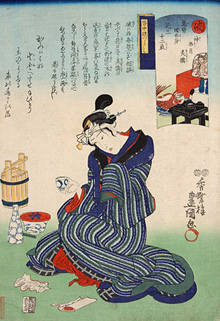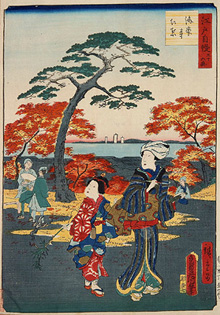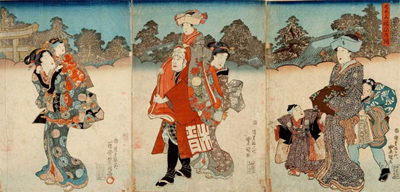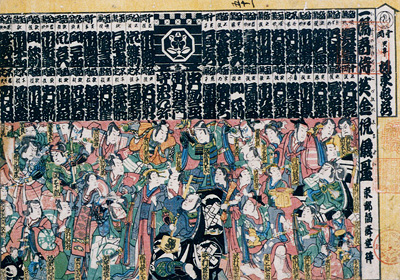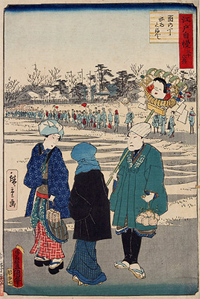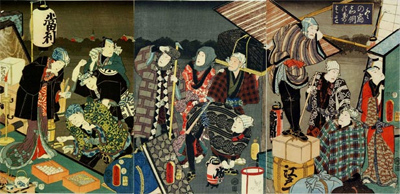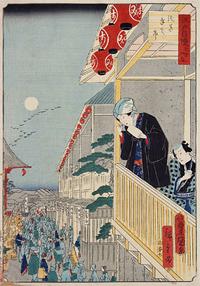EDO TOKYO Digital Museum
Spring (January - March) / Summer (April - June) / Autumn (July - September) / Winter (October - December)Winter (October - December)
October
According to tradition, October is the month ‘where the gods are away’. It was believed that during this month, the deities of Japan would depart to the region of Izumo and no festivals would be held in the shrines within the city of Edo. Because of this, people went out and enjoyed viewing the colorful autumn leaves instead, which was one of the most beloved traditions during the season. Kaianji in Shinagawa was acclaimed for being the best spot to enjoy the beautiful colors of the autumn leaves and was often drawn in paintings.
Yaburu, Ebisu-ko Festival in Kanna-zuki (the tenth month of the lunar calendar) Collection of Inscriptions on the middle section of Calendars (Isegoyomi Mitate Jūnichoku Yaburu Kanna-zuki Ebisukō Koyomi Chūdan Dukushi) Painted by Utagawa Toyokuni III Around 1847 - 1848 (Kōka 4 - Kaei 1)
(Edo Jiman Sanjūrokkyō Kaian-ji no Momiji) Painted by Utagawa Toyokuni III and Utagawa Hiroshige II
1864 (Genji 1)
November
At dawn on the first day of November, a sound of drums was made in order to notify the people of the beginning of Kaomise (the showing of faces). This tradition of Kaomise was also called Shibai-shōgatsu (new year drama), as the three authorized theaters of Edo would feature their new cast and put on new kabuki performances of the year. Lovers of kabuki would line up outside theaters on the final night of October.
Painted by Utagawa Toyokuni III Around 1844 - 1848 (Kōka Period)
Around 1863 (Bunkyū 3)
December
People began to be in a hurry in many ways in December, as the end of that year is just around the corner. A market called Toshinoichi (‘the year-end market’) was held at the end of each year and it is still held today. There was a big crowd of people who went to the market to purchase goods to be consumed for the coming year.
Painted by Utagawa Toyokuni III 1855 (Ansei 2)
* To view more explanation, please click the each image.


